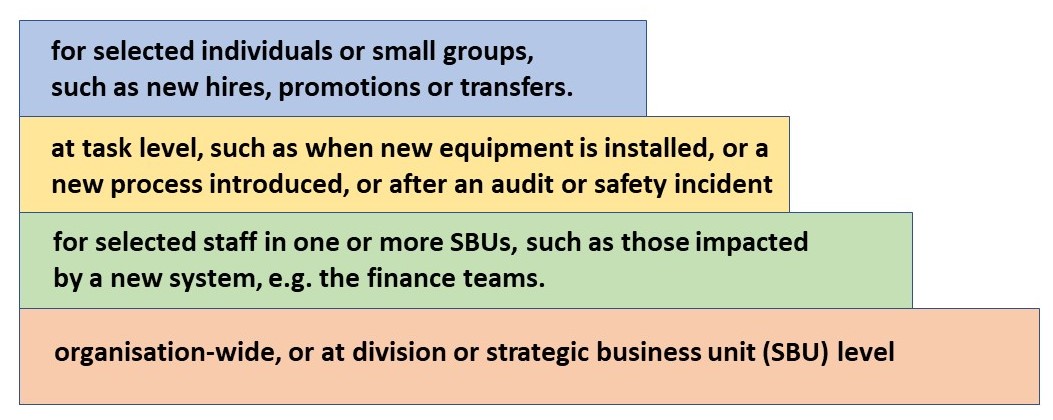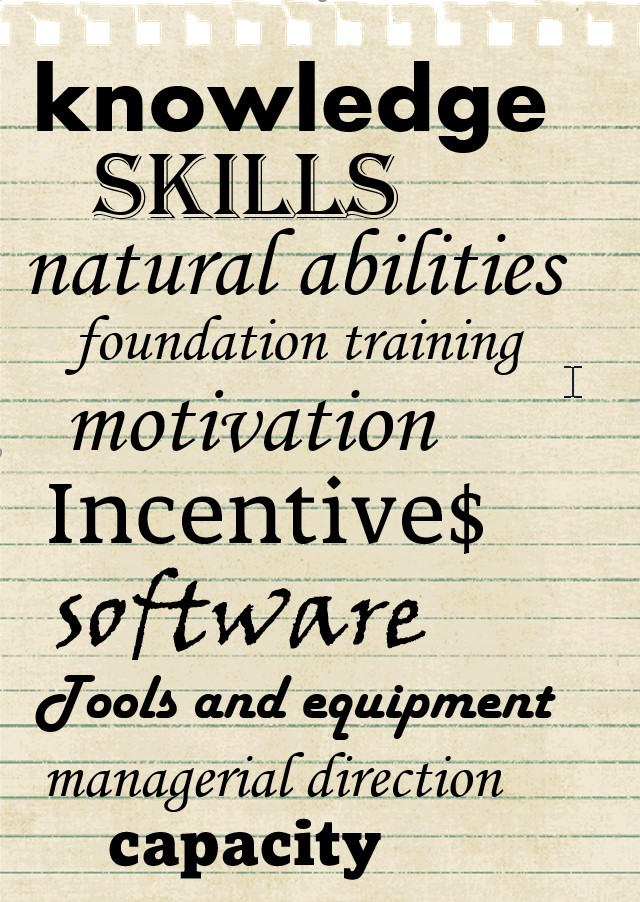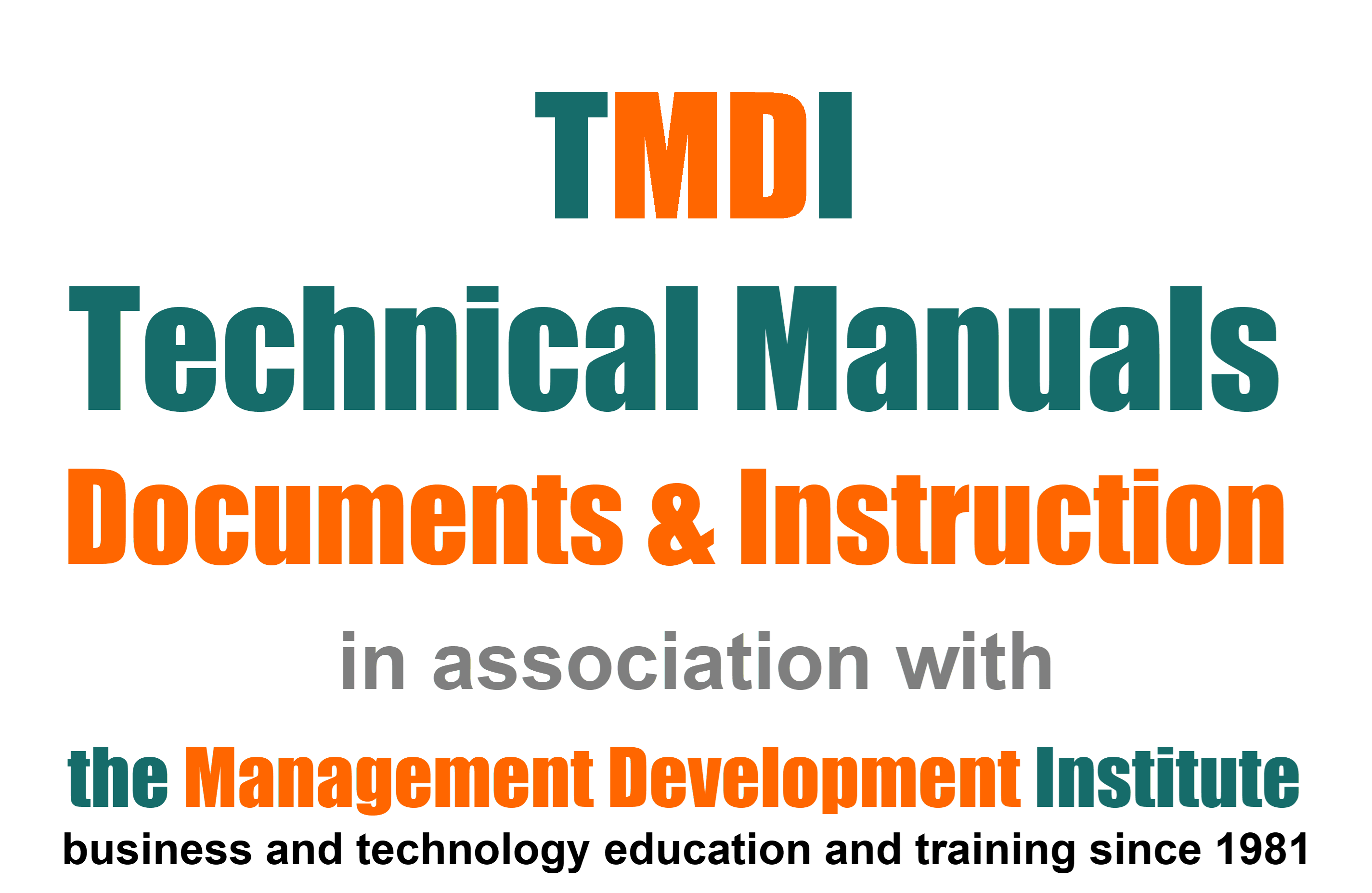 |
What is a Training Needs Analysis?
A Training Needs Analysis (or Assessment) is the process used to identify what training is required, by whom and by when.
It is the starting point for designing an effective training program.
It may also be called a “needs analysis,” a “training needs assessment,” a “performance assessment,” or something else.
A TNA is simply the process of reviewing and evaluating a performance issue to determine its root cause, then offer one or more solutions.
How to conduct a TNA
Here are five simple and practical steps for conducting a needs analysis.
1. View the big picture then drill down to the detail.
A thorough TNA will enable management to:
1. identify sources of potential problems
2. highlight opportunities for improvement
3. expose knowledge and/or skills gaps
A TNA may be conducted at various levels:

2. Establish the required knowledge and/or skills
(Typically performed at the task or role level)
1. Define the KPIs
2. Check that compliance requirements are covered
3. Confirm the job behaviours required
4. Determine how success will be measured
5. Obtain feedback on your conclusions.
3. Evaluate current skills
(Typically performed at the individual level)
1. Compare job role requirements with current performance levels, to establish the required knowledge and skill levels
2. Review current training to assess what’s currently working well and what could be improved, or changed
3. Understand how people are doing their jobs, ideally by interview and observation
4. Ensure that managers and supervisors share the same understanding of the jobs as the people actually doing them.
Useful analytical tools and techniques can include:
Questionnaires
Surveys
Observation
Monitoring
Interviews
Evaluating work outputs
Competency assessments
Competitor analysis
Evaluation by supervisor
Peer or 360 evaluation
Other reviews
The focus of this analysis tends to be static, or based on a theoretical benchmark or standard.
4. Identify performance gaps
(Typically performed at the individual level).
Compare current with required knowledge and skill at both group and individual level, to clearly identify the extent of any gaps,
i.e., the difference between where we are now and where we need to be.
The analytical tools and techniques described in point 3 above can be equally useful for identifying performance gaps.
The differences between their application in the two situations is that the former tend to be static, or if comparative,
compared against a benchmark, a standard, or other notional criteria.
When using them to identify performance gaps, they are more useful when comparing performance to the new performance criteria.
Causes of performance gaps are not always immediately obvious and may only become apparent after careful investigation. They may include:

5. Establish training needs
A valid and well executed TNA can help managers decide if training is the best solution, or whether a non-training solution could be more appropriate.
Training is usually considered to be the best solution if the gap results from a lack of knowledge or skills.
When it comes to making training recommendations, you can take a wide or narrow view, given the range of delivery methods available.
Different methods may suit different kinds of skills gap, but we’ll look at these in another section.
What can go wrong?
Assumption that training is the best solution
Focus on what employees think they need to learn
Focus on what managers think employees need to learn
Failure to align the training with the business goals
Reliance on self-reported data (self-perceptions vs reality).
|





